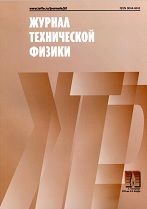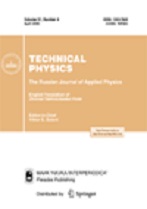|
This article is cited in 3 scientific papers (total in 3 papers)
Radiophysics
Electromagnetic radiation from linearly and nonlinearly oscillating charge drops
A. I. Grigor'ev, S. O. Shiryaeva
P.G. Demidov Yaroslavl State University
Abstract:
It has been shown that analytic calculations of the intensity of electromagnetic radiation from an oscillating charged drop in the approximation linear in the oscillation amplitude (small parameter is on the order of 0.1) give only the quadrupole component of the total radiation. The dipole component can only be obtained in calculations using higher-order approximations. Nevertheless, the intensity of the dipole radiation turns out to be substantially higher (by 14–15 orders of magnitude). This is because the decomposition of radiation from a system of charges into multipole components (differing even in the rates of decrease in the potential with the distance) is carried out using the expansion in a substantially smaller parameter, viz., the ratio of the size of the emitting system (in our case, a drop of radius $\sim$10 $\mu$m) to the distance to the point of observation in the wave zone of the emission of radiation (emitted wavelength) of 100–1000 m. As a result, this second small parameter is on the order of 10$^{-7}$ to 10$^{-8}$. On the other hand, in accordance with the field theory, the ratio of intensities of quadrupole and dipole radiations is proportional to the squared ratio of the hydrodynamic velocity of the oscillating surface of a charged drop to the velocity of propagation of an electromagnetic signal in vacuum (velocity of light), which yields a ratio of 10$^{-14}$ to 10$^{-15}$.
Received: 09.02.2016
Citation:
A. I. Grigor'ev, S. O. Shiryaeva, “Electromagnetic radiation from linearly and nonlinearly oscillating charge drops”, Zhurnal Tekhnicheskoi Fiziki, 86:12 (2016), 129–134; Tech. Phys., 61:12 (2016), 1885–1890
Linking options:
https://www.mathnet.ru/eng/jtf6376 https://www.mathnet.ru/eng/jtf/v86/i12/p129
|


|





 Contact us:
Contact us: Terms of Use
Terms of Use
 Registration to the website
Registration to the website Logotypes
Logotypes








 Citation in format
Citation in format 
